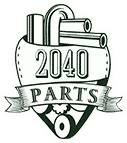Wagner 9006 Low Beam Halogen Replacement Headlight Bulb Nos on 2040-parts.com
Whitinsville, Massachusetts, US
Headlights for Sale
 Ac delco professional 19257058 headlight bulb(US $17.50)
Ac delco professional 19257058 headlight bulb(US $17.50) 97-99 mitsubishi eclipse led single halo angel clear chrome projector headlights(US $118.98)
97-99 mitsubishi eclipse led single halo angel clear chrome projector headlights(US $118.98) 2013 range rover evoque left hand headlight complete, two tabs broke, works fine(US $100.00)
2013 range rover evoque left hand headlight complete, two tabs broke, works fine(US $100.00) 2x osram sylvania 62201als h3 12v 100w pk22s halogen headlight lamp allseason(US $20.00)
2x osram sylvania 62201als h3 12v 100w pk22s halogen headlight lamp allseason(US $20.00) 08-12 mitsubishi lancer/evo x led drl strip/ccfl halo projector headlight chrome(US $342.98)
08-12 mitsubishi lancer/evo x led drl strip/ccfl halo projector headlight chrome(US $342.98) 02-03 nissan maxima hid xenon right headlight bulbs ballast & harness oem oe(US $354.41)
02-03 nissan maxima hid xenon right headlight bulbs ballast & harness oem oe(US $354.41)
Tesla Model S accused of unintended acceleration
Wed, 25 Sep 2013The National Highway Traffic and Safety Administration received a complaint on Tuesday for the unintended acceleration of a Tesla Model S. We haven't heard much of that term since the large Toyota recall in 2009. Before that it was with Audi in the 1980s.
VW and Chinese ‘in talks to buy Vauxhall/Opel’ from GM
Thu, 09 Jun 2011GM is considering selling its loss-making European operations, it emerged tonight. If it goes ahead and severs ties with GM Europe, the General would cede control of Vauxhall and Opel, the second biggest car brand in the UK.And in another extraordinary twist, CAR has confirmed that top-level talks have been taking place between Volkswagen and the German government, which is keen to avoid Opel falling into foreign hands. Chinese car makers are circling but Chancellor Angela Merkel, who has close connections to Volkswagen chief Martin Winterkorn, would prefer VW to step up to the plate as a potential buyer than a Chinese brand.
Worth a read: Wired's 'Why Getting It Wrong Is the Future of Design'
Thu, 25 Sep 2014Wired has just published a series of short articles entitled 13 Lessons for Design's New Golden Age. While there are some interesting examples cited in the piece, the concluding article, ‘Why Getting It Wrong Is the Future of Design' by the former creative director of Wired magazine, Scott Dadich, feels like it has particular resonance for car design. Dadich's Wrong Theory uses disruptive examples from the world of art, plus his own experience of working at Wired, to explain how design goes through phases: establishing a direction, creating a set of rules that define that direction and finally someone who dares to break from that direction.




